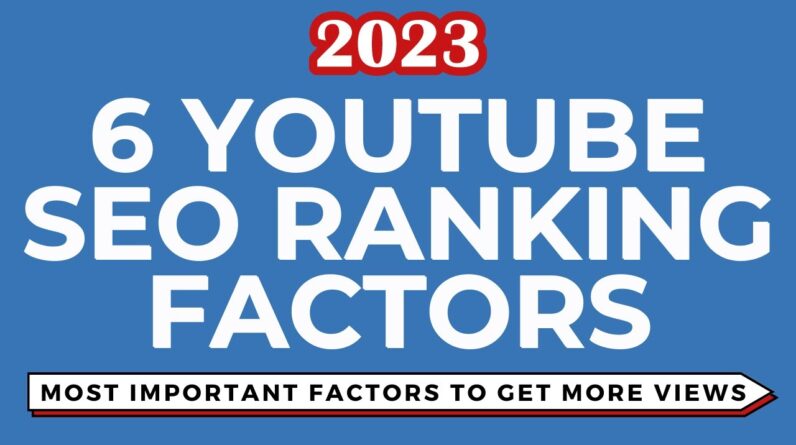
In this video, we will go over the key YouTube SEO ranking factors that can help you outrank your competitors on YouTube and Google search and drive more organic traffic to your videos. There are plenty of SEO ranking factors for YouTube and Google, but these are all very important for getting more video views on YouTube.
Channel Relevance & Authority for a Video Topic
When it comes to YouTube SEO, having a relevant and authoritative channel for your video topic is crucial. YouTube values channels that are considered experts in a particular niche or topic, and channels with a high authority are more likely to rank higher in search results. To establish channel relevance and authority, make sure your channel is focused on a specific topic and consistently produces high-quality videos that provide value to your audience.
Video Title, Description, & Thumbnail (Don’t Forget Tags)
The title, description, and thumbnail of your YouTube video are key components that impact its SEO performance. The title should be descriptive and include relevant keywords that your audience is searching for on YouTube or Google. The description should provide a detailed overview of the video’s content and also include relevant keywords and links to related content. Don’t forget to add tags that are relevant to your video topic, as these can help YouTube and Google understand what your video is about and rank it accordingly. Additionally, an eye-catching and relevant thumbnail can entice users to click on your video, increasing its chances of ranking higher in search results.
Audience Retention and Average % Viewed
Audience retention and average percentage viewed are important metrics that YouTube and Google use to determine the quality and relevance of your video content. Audience retention refers to the percentage of viewers who watch your video till the end, while the average percentage viewed represents the average portion of your video that viewers watch. Videos with higher audience retention and average percentage viewed are considered more engaging and relevant and are more likely to rank higher in search results. To improve these metrics, create videos that are compelling, informative, and visually appealing, and keep your audience hooked from start to finish.
Average Video Watch Time
The average watch time of your YouTube video is another critical factor that impacts its SEO performance. Google and YouTube consider longer watch times as a signal of high-quality content, and videos with higher average watch times are more likely to rank higher in search results. To increase your video’s average watch time, create longer videos that provide in-depth information and value to your viewers, and keep them engaged throughout the video with engaging visuals, storytelling, and relevant examples.
Video Impressions CTR on YouTube
The click-through rate (CTR) of your video impressions on YouTube is an important indicator of how compelling your video title and thumbnail are to users. A higher CTR indicates that your title and thumbnail are resonating with your audience, and are more likely to rank higher in search results. To improve your video’s CTR, create descriptive and keyword-rich titles that accurately represent your video’s content, and design visually appealing thumbnails that are relevant and eye-catching.
Video Engagement (Like Ratio, Comments, Shares, Views)
Engagement metrics such as likes, comments, shares, and views are important signals of how valuable and engaging your video content is to users. Videos with higher engagement metrics are considered more relevant and authoritative and are more likely to rank higher in search results. To boost your video’s engagement, encourage your viewers to like, comment, and share your video, and respond to their comments to foster engagement and build a community around your content.

